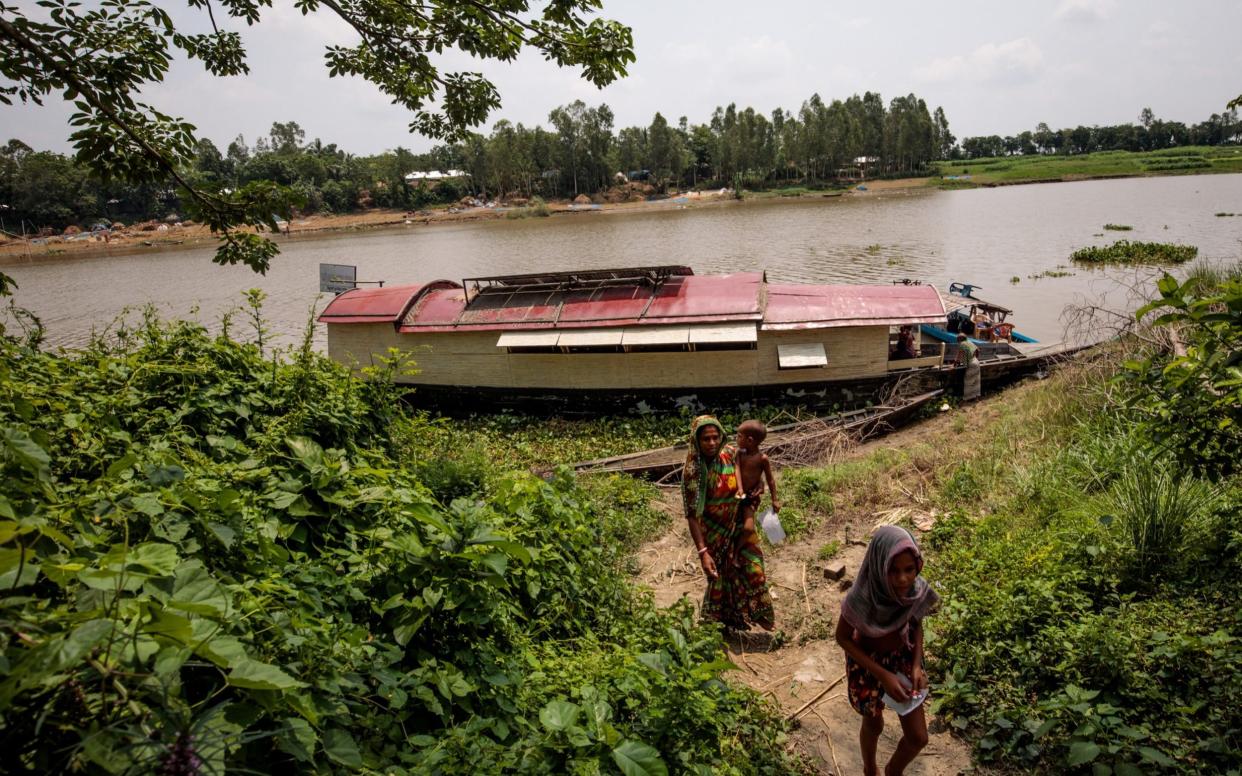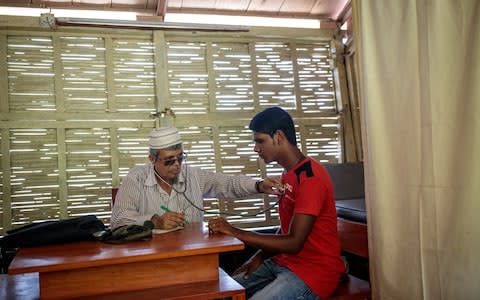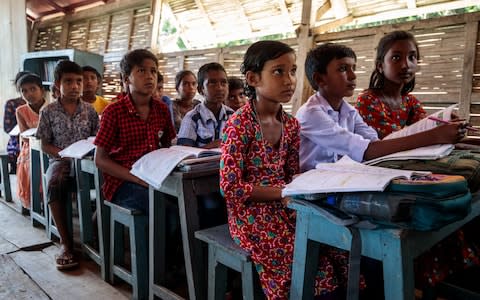The floating hospitals providing a lifeline to communities cut off by the monsoon

Alpana Khatun surveys the meagre plot of land where she grows a handful of crops such as black gram and spinach.
She lives with her husband and three children in the village of Haraibari Adarsha Gram which stands precariously on a bank just metres above the vast Boral river.
Alpana’s descendants have long depended on the Boral’s flood waters to irrigate their crops. However, in the past 10 years she has noticed the rains are coming later and the flood waters are increasing in severity. “This causes our vegetables to be destroyed,” Alpana says.
No country in the world has quite the symbiotic relationship with water as Bangladesh. A total of 300 rivers dissect a low-lying country where around 50 per cent of land is less than eight metres above sea level.
On one hand, this topography provides the ideal opportunity for Bangladeshis to earn an income.
But on the other these channels of water turn deadly and cut communities off from the services they rely on, particularly during the monsoon season of June to October. And, as Alpana has noted, the monsoon is changing.

“Children living in coastal areas of Bangladesh regularly have to struggle with tidal surges and heavy monsoon rains that force many to pause their education for weeks at a time or prevent them from being able to access health services,” says Syed Ahsan, deputy director at Save the Children in Bangladesh.
“Erratic weather patterns, fierce tropical storms and rising sea levels could increasingly mean that these children lose access to continuous education, healthcare and child protection services,” he says.
Two NGOs have now stepped in to connect these remote communities when they are isolated by the rising monsoon flood waters.
Friendship runs two hospitals on the remote islands of the Brahmaputra and Jamuna rivers in northern Bangladesh.
But these are hospitals with a difference – they are floating facilities which service five different locations every two months. Over 30,000 operations have been carried out on-board the boats, which also provide life-saving primary care to Bangladeshis in this remote area.
“People in the remote char [island] regions usually have to spend huge amounts of money to be able to travel to and then see a doctor,” said Dr Kazi Golam Rasul, the head of health at Friendship.

It can also take several days during the monsoon flooding to reach a government hospital.
Quack doctors have been filling the care gap – individuals with no qualifications masquerading as doctors in areas with medical shortages.
“They were taking the money and the pocket of local people was becoming empty all the time,” said Dr Rasul.
Umme Ayman Ibn Ruku, six, fractured her right foot when she was 14 months old. Her family could not afford to travel for treatment and she was left both housebound and in agony throughout her childhood.
Earlier this year, her father Atiqur heard about the floating hospitals. Ruku has since had a cast fitted, a bone removed and will now have surgery in several months to re-set her foot.
“If it wasn’t for the floating hospital she would still be searching for treatment,” said Atiqur. “After five years of being disabled she will be able to walk normally.”
Friendship’s doctors are most proud of their efforts to combat cervical cancer. There is currently no government screening programme in rural Bangladesh despite over 50 million women being at risk.

Friendship has screened around 110,000 women for the disease and provided treatment to the 2,000 that needed urgent care. Its success will see it open a further three floating hospitals in 2019.
As well as providing floating healthcare services on the Boral river to remote communities in the Natore and Pabna district, Shidhulai Swanirvar Sangstha (SSS) also provides floating schools and training facilities.
On the nearby Gumani River, Jannati Khatun, eight, wears a determined look her on face that belies her years.
She walks to the floating school which is moored outside her home in the village of Nadipara where she studies under the watchful eye of her teacher, Anjumanra Khatun.
“These are children from extremely poor families,” says Anjumanra. “Without the floating school these children would surely be illiterate, there is no other school near here and they cannot afford to travel.”

Anjumanra leads a fast-paced mathematics lesson for her class of around thirty pupils – all of whom are either able to walk to school or are picked up by the boat as waters rise.
“The school has been so successful at stopping child marriages in these surrounding villages and allowing girls to get an education and a future,” says Anjumanra. “Before the floating school, there was no other educational option here.”
Bangladesh has the second highest number of child brides in the world with 4.5 million marrying underage, according to Unicef. The practice is particularly common in rural areas where families can’t afford to support all of their children and so marry off daughters young.
It is clear that Jannati is the star pupil. Anjumanra hopes that she will emulate another student she taught on the boat who did well in his exams, broke the cycle of poverty and now works for the military.
Back on the Boral river, Mosamat Akhi Khatun, breaks into a huge grin as she gazes at several water buffalo submerging themselves in the cool water. Thanks to a floating skills training centre set-up by the SSS she is now the head of her household, despite being the youngest of five sisters.

Mosamat spends two hours a day learning tailoring skills after she attends college, where she is studying IT. She has now opened her own business and makes around 2,000 taka (£19) a week designing and selling clothes.
She was able to buy a cow for her father who had previously struggled to eke out an existence as a subsistence farmer.
Most importantly, her earnings have enabled her to stay in college by paying for her own education.
“There would have been no other option without this training centre to earn income,” Mosamat says. “Most importantly, it has also helped to protect me from early marriage.
“In the future I would like to have my own shop where everyone will come to me and give their orders.”
Protect yourself and your family by learning more about Global Health Security

 Yahoo News
Yahoo News 
